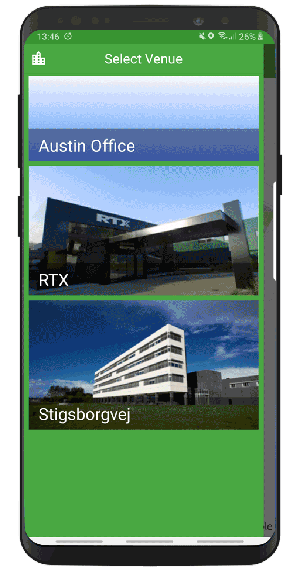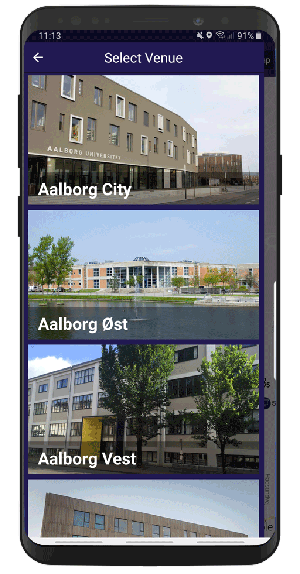Indoor navigation is a valuable tool. It orientates people and makes navigating large indoor spaces easy and stress-free. But what exactly is it and how does it work?
What is indoor navigation?
Just like traditional maps, indoor mapping transfers spatial data on a 2D or 3D map, the difference is that it is done digitally. By visualising an indoor venue, indoor mapping allows for solutions like positioning and indoor navigation.
You might think this sounds familiar and you would be right. For the last few decades, we have used Global Positioning Systems (GPS) to find our way outdoors. Satellites map out the earth’s terrain to form a virtual map, while GPS makes sense of the space by situating people and places in the space, otherwise known as positioning. Together, they work to form interactive maps, like Google Maps, that facilitate navigation in our build environment. The only problem is that GPS signals can only pass through an unobstructed line of sight. This means that it can pinpoint your location outside, but it cannot be used inside buildings, and that’s where indoor navigation comes in to play.
Thanks to Indoor navigation, you can get all the benefits of outdoor navigation while indoors. To understand more about what indoor navigation is, who uses it, and for what purpose, dive into this guide. It’ll answer all the questions you may have and give you the tools to understand whether indoor navigation is right for you.
What is the difference between indoor navigation and indoor positioning?
Indoor navigation is a base map through which you can get directions within buildings. An Indoor Positioning System (IPS), on the other hand, has the same function as GPS in an indoor environment. IPS serves to accurately locate people or objects digitally, often on a mobile device. IPS allows certain features that are not accessible with indoor navigation alone. Together, indoor navigation and indoor positioning go hand in hand to create a well-rounded solution for finding your way indoors.
Do I need IPS to have an indoor navigation solution?
Indoor navigation is the starting point for any project that requires location awareness. IPS is an “add-on” to indoor navigation, but it’s not essential, as the map is created from the plans of the building.
Pairing indoor positioning with IPS makes the experience of indoor navigation even more user-friendly, as the “blue dot” indicates a user’s position, eliminating the need to type in current location, count doors, turns or navigate spaces - you simply follow along in real-time. It also unlocks benefits, like “find my nearest”, location-based push notifications, and provide you with insights of how people move within your venue. If you want to know more about the advantages and disadvantages of IPS, check out this blog.
Who uses indoor navigation and for what?
The most basic advantage of indoor navigation is, of course, wayfinding. This is of particular interest for large indoor spaces with either complicated or transient floor plans and/or a large flow of visitors.
As previously mentioned, if combined with an IPS, the benefits of indoor navigation goes beyond wayfinding. For instance, hospitals, offices, and universities can use IPS to track equipment and people, retail can use IPS for location-based marketing, so customers receive push notifications with relevant offers based on the products they’re looking at, and sport and event venues can use IPS to get insights on visitor flow and optimize their spaces accordingly, etc.
For all of these industries, indoor navigation not only improves the customer’s experience but also the worker’s as it can be used to ease administrative tasks and facility management.
 Which indoor navigation solution is best?
Which indoor navigation solution is best?
Indoor navigation is still a fairly new technology and is known as the last frontier of navigation. At MapsPeople we make the world more accessible by guiding you anywhere anytime. Concretely that means providing you with seamless indoor to outdoor navigation, meaning you can get directions from your home, through the city and all the way to a meeting room on the 3rd floor - all in one app. The design and functionality are familiar thanks to Google Maps technology. We provide a platform rather than a cookie-cutter solution. Every building is different, and your needs for an indoor navigation solution has to fit your specific demands, be flexible, and easily manageable.
How do you implement indoor navigation?
Implementing indoor navigation is easier than it may seem. We need CAD drawings of your venue to map it. Thanks to our Software Development Kit (SDK) and Application Programming Interface (API) the solution can be implemented in an existing app, websites, or info kiosk. Once the solution is in your hands, our CMS makes it easy for you to manage the map, move points of interests, and enforce security measures.
Alternatively, you can use the MapsIndoors app. Because the needs for indoor navigations vary so much from one building to the other, we do not have a set pricing. If you want to know more about what influences pricing, have a look at this blog.
What is the future for indoor navigation?
Indoor navigation has been called the last frontier of navigation, but how much room for growth is there?
The principle of maps has not changed much since its creation. It is used to find your way, to show roads, borders, and delimitations. That said, we have come a long way from paper and pen drawn maps to digital and interactive maps on screens.
It is impossible to say for sure what the future of indoor navigation holds, but there are a few clues that point to a few things. The first one, which has already started, is crowdsourcing for more accurate information. Another thing is the integration of augmented reality in wayfinding. Finally, the evolution of technology is guaranteed to have an influence on the accuracy of indoor wayfinding and indoor positioning, to the point that there will no longer be a margin of error when it comes to distances and routing.
Indoor navigation is both simple and complex. Simple because we are so familiar with using technology to find our way. Complex because our built environment is intricate and has a wide variety of functions and needs.
If you still have some questions about indoor navigation, have a look at our FAQ or reach out to us.
September 18, 2019




.png)